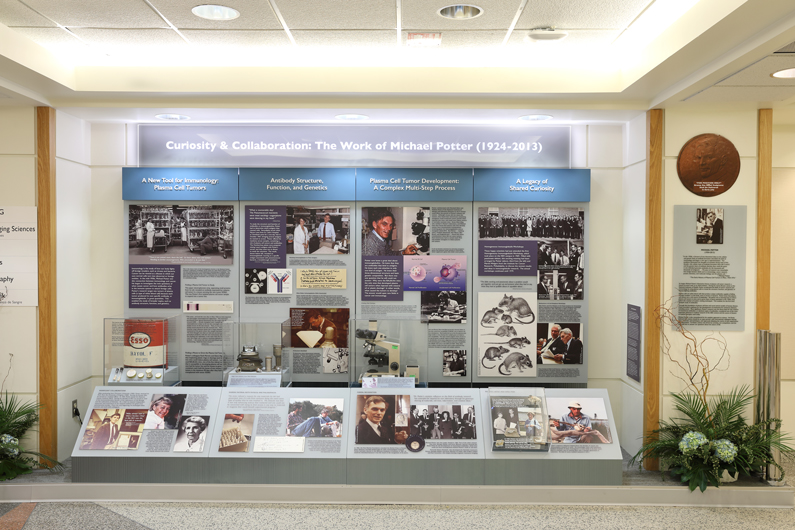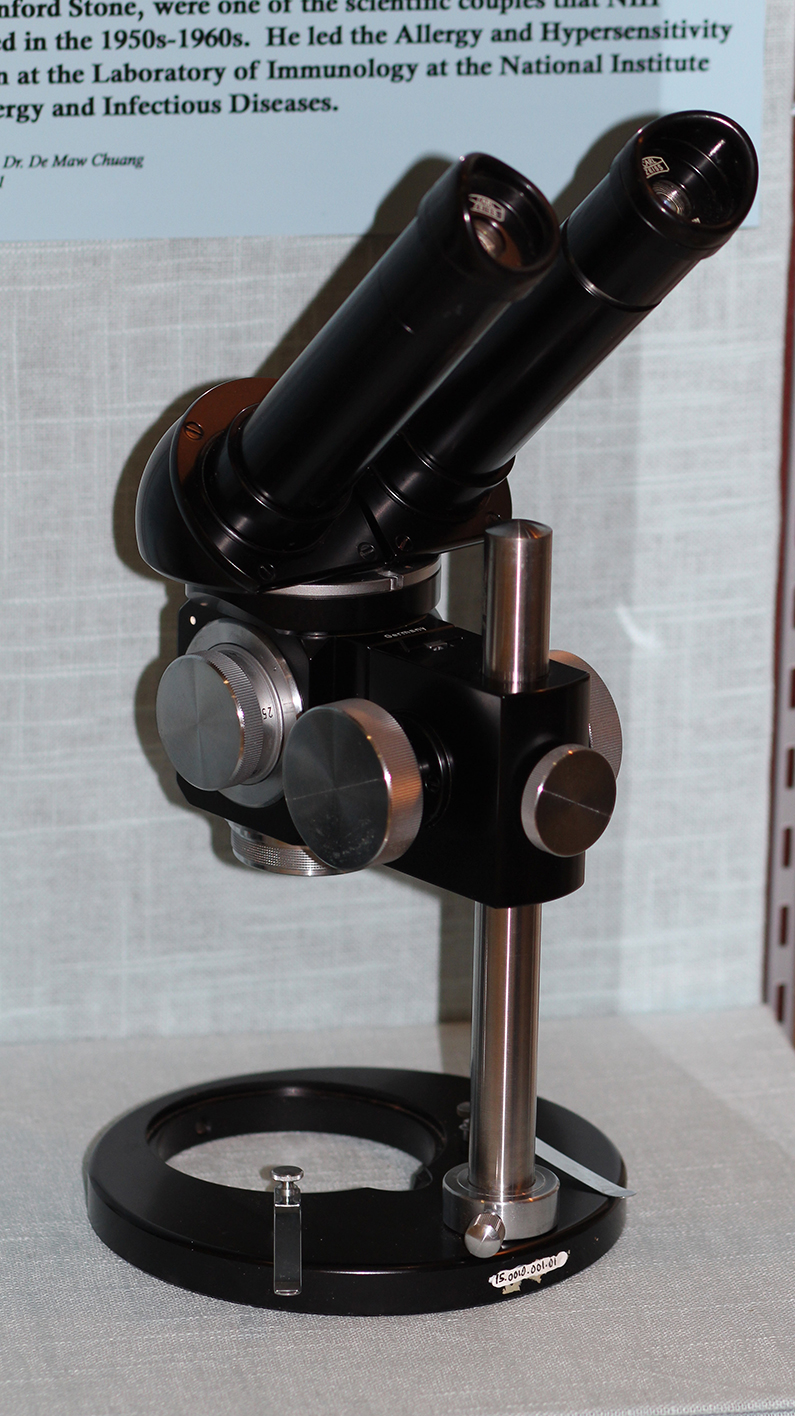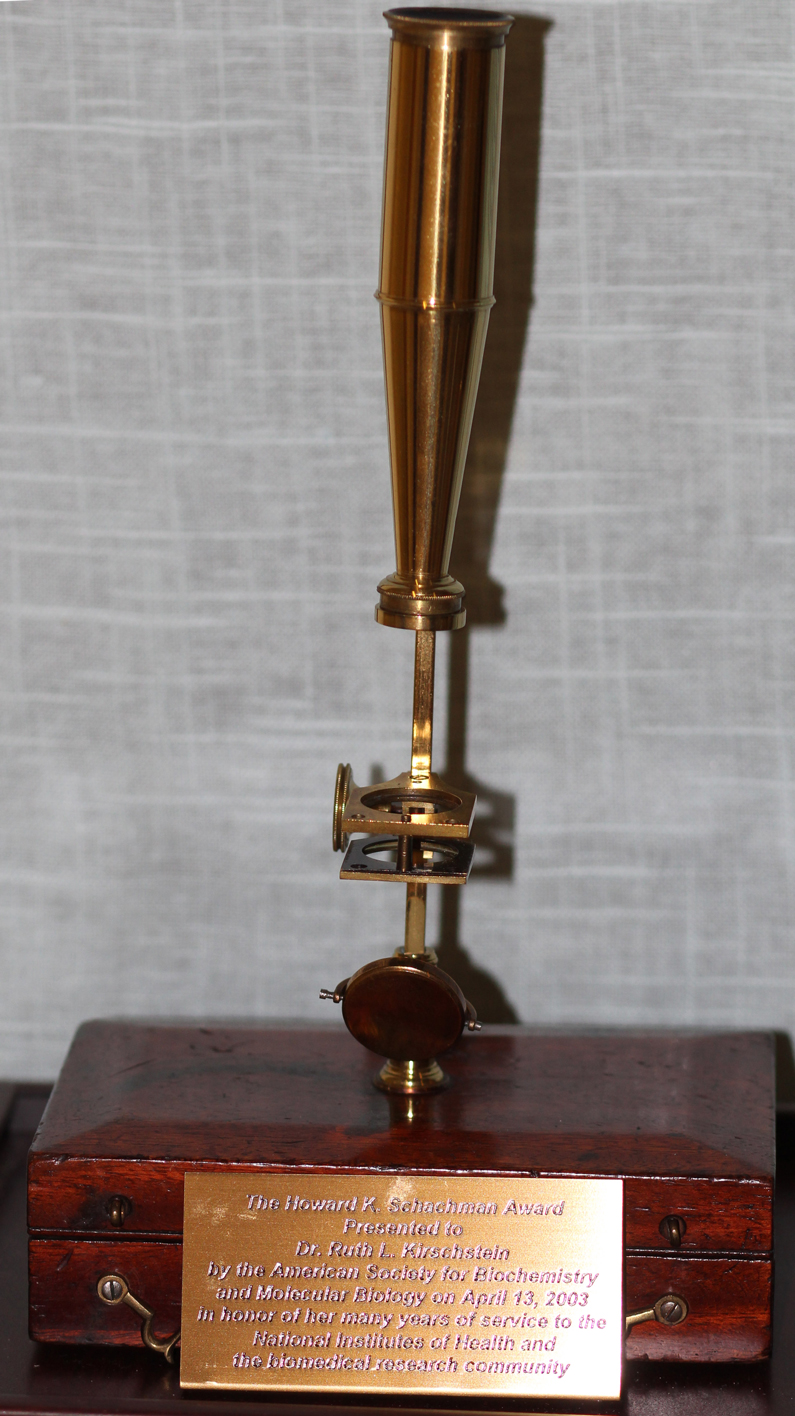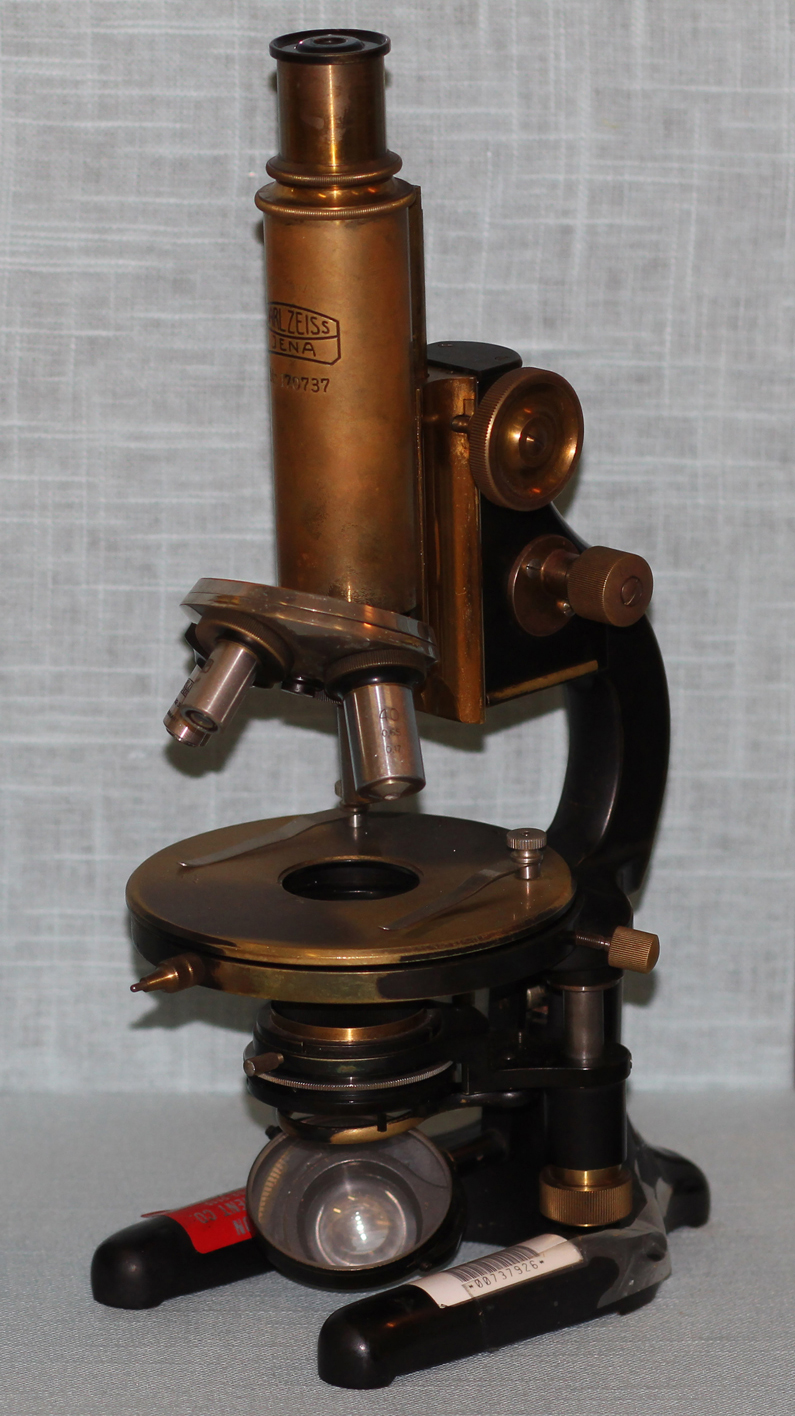Content on this webpage is provided for historical information about the NIH Clinical Center. Content is not updated after the listed publication date and may include information about programs or activities that have since been discontinued.

Two new history exhibits recently opened in the NIH Clinical Center in 2018. The larger of the two, features displays of artifacts, photos and history of NIH pioneers Christian Anfinsen and Michael Potter. The displays are in-between the FAES bookstore and Phlebotomy, on the first floor. Potter held a 50-year career at the National Cancer Institute. His research focused on plasma cell tumors and the structure, function and genetics of antibodies. Potter received a 1984 Albert Lasker Award for Basic Medical Research. Anfinsen worked at what was called the National Heart Institute and what is now the National Institute of Diabetes and Digestive and Kidney Diseases. Anfinsen shared the 1972 Nobel Prize in chemistry for his work on ribonuclease.
The second display, Microscopes, Tools of Science from the DeWitt Stetten, Jr., Museum of Medical Research Collection, features several microscopes. One dates back to the 1830s - that's older than NIH which traces its roots back to 1887. The exhibit is located near the entrance to the Bioethics Department on the first floor (past the Pediatric outpatient Clinic). The exhibit will be on display for 3 years.
The exhibits are presented by the Office of NIH History and the Stetten Museum. The Stetten Museum at NIH collects instruments important to scientific research, especially instruments and technologies developed at NIH.



The Microscopes, Tools of Science exhibit is located near the entrance to the Bioethics Department on the first floor (past the Pediatric outpatient Clinic). The exhibit, which features four microscopes and narrative text, will be on display for three years.

